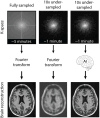Opportunities for Artificial Intelligence in Operational Medicine: Lessons from the United States Military
- PMID: 40428137
- PMCID: PMC12108871
- DOI: 10.3390/bioengineering12050519
Opportunities for Artificial Intelligence in Operational Medicine: Lessons from the United States Military
Abstract
Conducted in challenging environments such as disaster or conflict areas, operational medicine presents unique challenges for the delivery of efficient and quality healthcare. It exposes first responders and medical personnel to many unexpected health risks and dangerous situations. To tackle these issues, artificial intelligence (AI) has been progressively incorporated into operational medicine, both on the front lines and also more recently in support roles. The ability of AI to rapidly analyze high-dimensional data and make inferences has opened up a wide variety of opportunities and increased efficiency for its early adopters, notably for the United States military, for non-invasive medical imaging and for mental health applications. This review discusses the current state of AI and highlights its broad array of potential applications in operational medicine as developed for the United States military.
Keywords: artificial intelligence; bioengineering; biomedical technology; disaster medicine; machine learning; military medicine.
Conflict of interest statement
The opinions and assertions expressed herein are those of the authors and do not necessarily reflect the official policy or position of the Uniformed Services University of the Health Sciences or the Department of Defense.
Figures



Similar articles
-
Artificial Intelligence in Military Medicine.Mil Med. 2024 Aug 30;189(9-10):244-248. doi: 10.1093/milmed/usae359. Mil Med. 2024. PMID: 39028176
-
Artificial intelligence for breast cancer detection and its health technology assessment: A scoping review.Comput Biol Med. 2025 Jan;184:109391. doi: 10.1016/j.compbiomed.2024.109391. Epub 2024 Nov 22. Comput Biol Med. 2025. PMID: 39579663
-
The promise of artificial intelligence: a review of the opportunities and challenges of artificial intelligence in healthcare.Br Med Bull. 2021 Sep 10;139(1):4-15. doi: 10.1093/bmb/ldab016. Br Med Bull. 2021. PMID: 34405854 Review.
-
The Need for Artificial Intelligence Curriculum in Military Medical Education.Mil Med. 2024 May 18;189(5-6):954-958. doi: 10.1093/milmed/usad412. Mil Med. 2024. PMID: 37864817 Free PMC article.
-
Challenges and strategies for wide-scale artificial intelligence (AI) deployment in healthcare practices: A perspective for healthcare organizations.Artif Intell Med. 2024 May;151:102861. doi: 10.1016/j.artmed.2024.102861. Epub 2024 Mar 30. Artif Intell Med. 2024. PMID: 38555850
References
-
- Marshall C. Here’s What’s in ‘Stargate’, the $500-Billion Trump-Endorsed Plan to Power U.S. AI. Scientific American. Jan 22, 2025.
-
- Makridakis S. The forthcoming Artificial Intelligence (AI) revolution: Its impact on society and firms. Futures. 2017;90:46–60. doi: 10.1016/j.futures.2017.03.006. - DOI
-
- Martin S. Advancements in Neural Machine Translation: Techniques and Applications. Acad. Pinnacle. 2024;7:5767–5772.
Publication types
LinkOut - more resources
Full Text Sources

